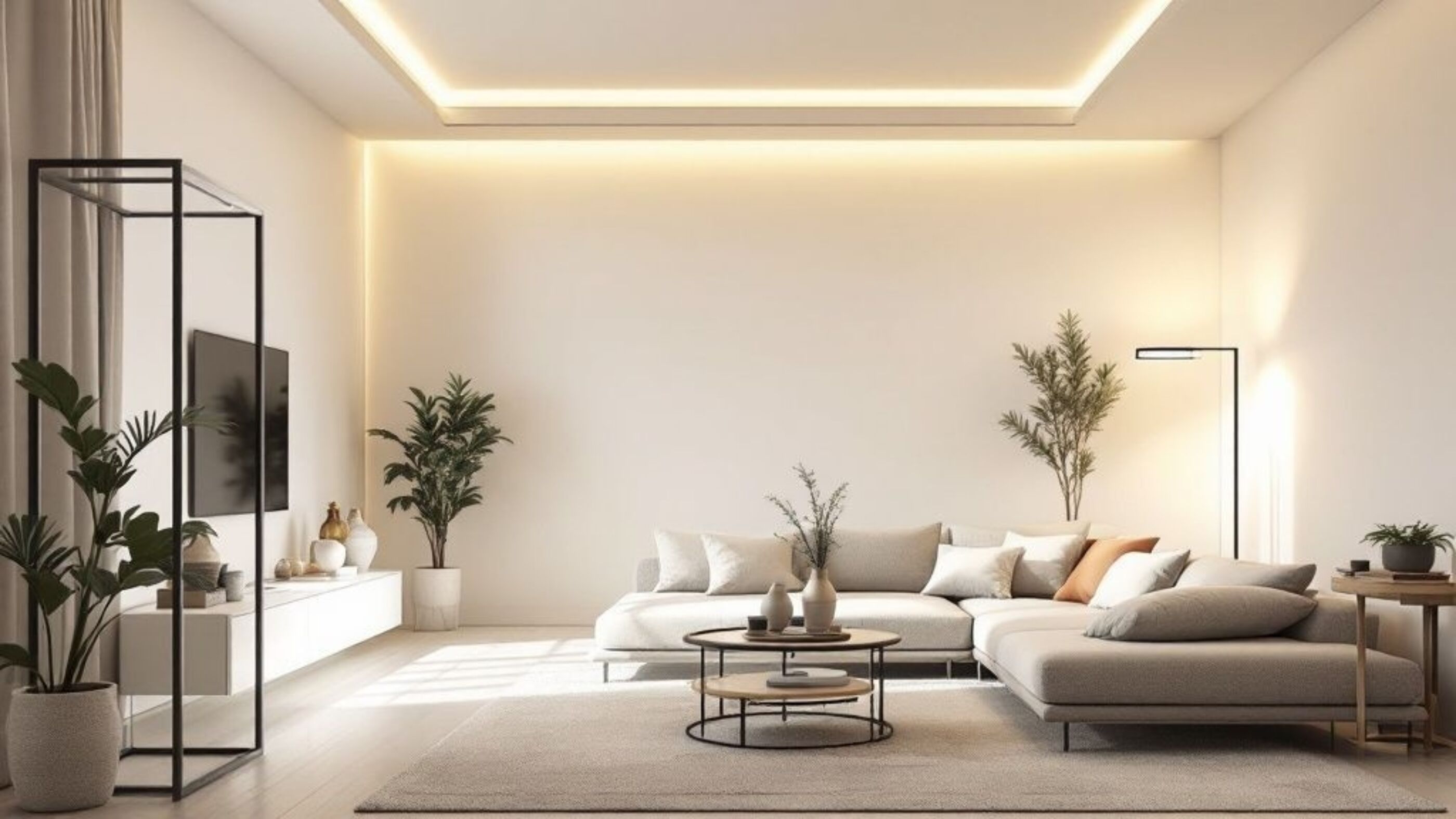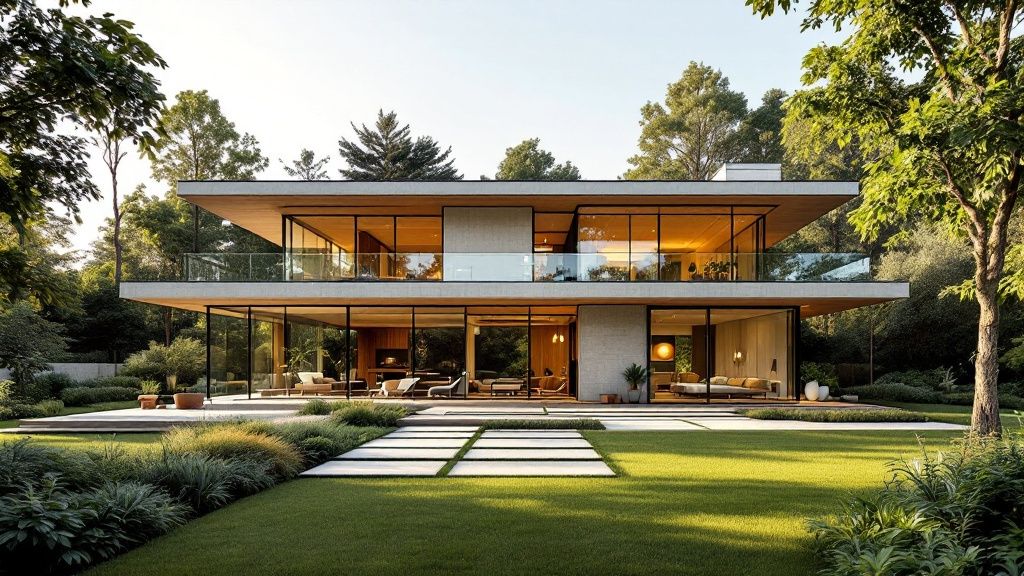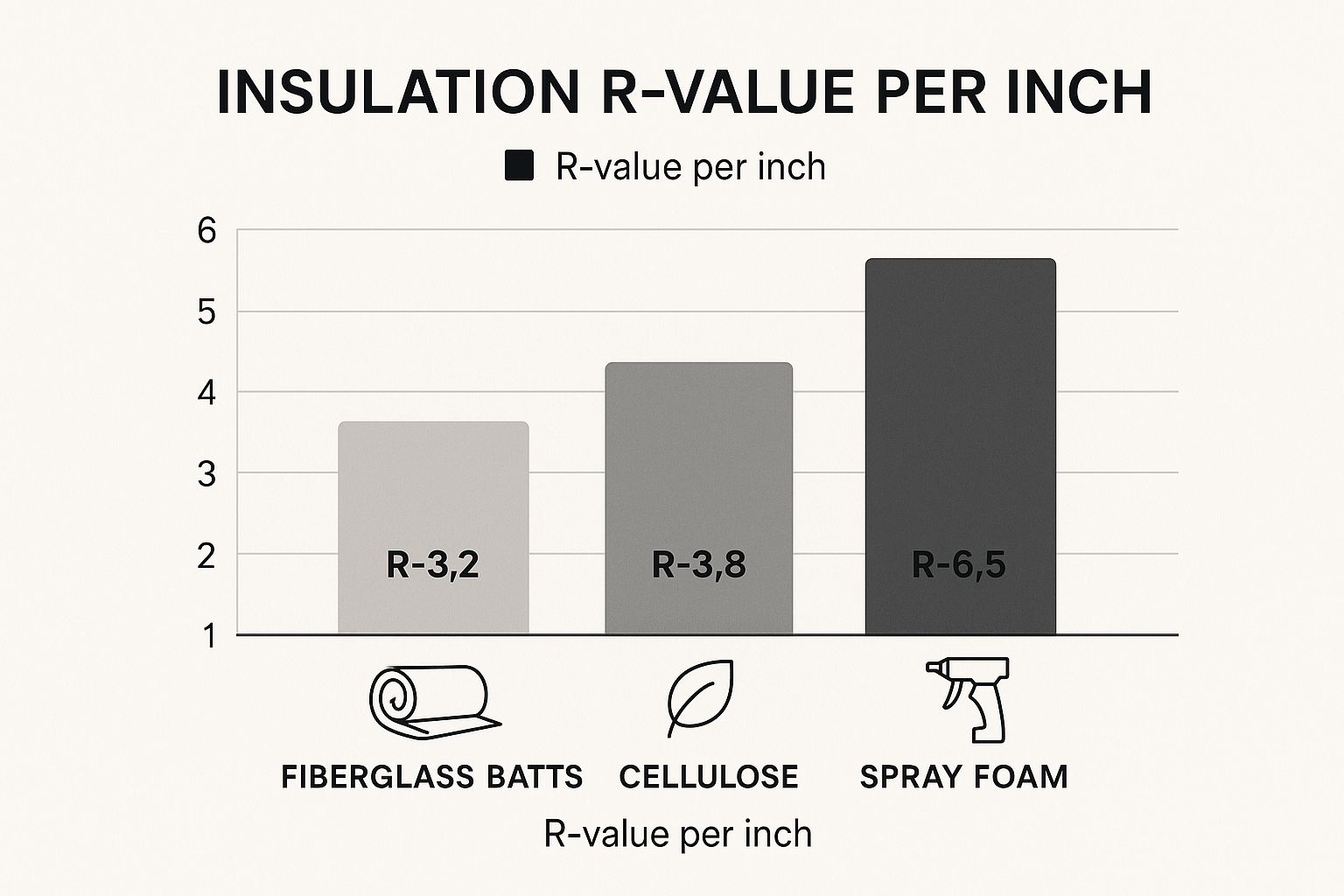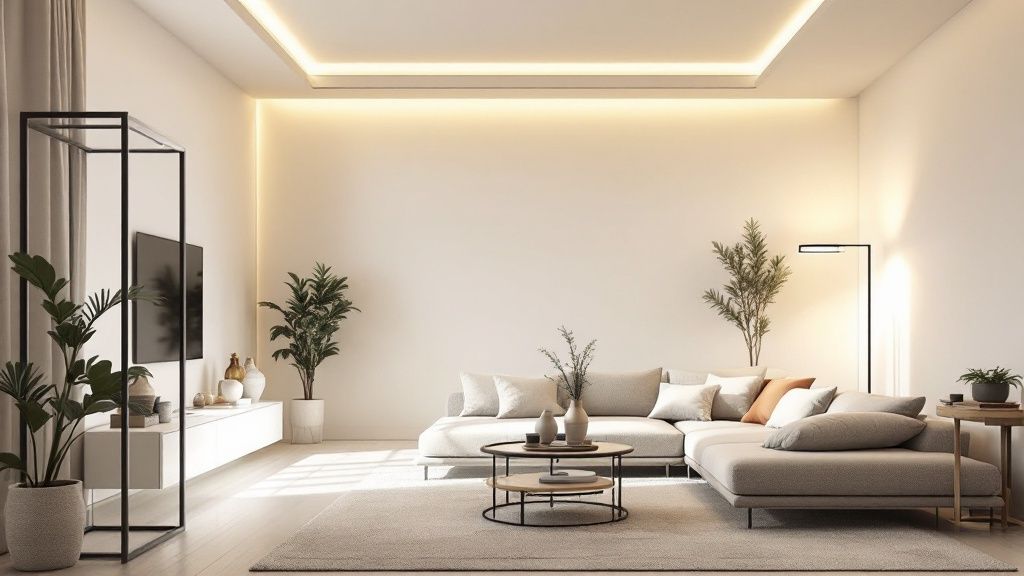Energy Efficient Home Design: Top Tips for Australian Homes

The Reality of Energy Efficiency in Australian Homes
Australian homeowners are increasingly aware of rising energy costs and their environmental impact. This has sparked a growing interest in energy-efficient homes. However, making the switch isn't always easy. Discussions with sustainable architects and homeowners reveal a complex mix of challenges and opportunities specific to Australia.
Climate Considerations Across the Country
One major challenge is Australia's diverse climate. The hot northern territories require different design solutions compared to the cooler, damp southern regions. For instance, a Darwin home might prioritize shade and ventilation, while a Hobart home might focus on insulation and passive solar heating. This means a one-size-fits-all approach to energy efficiency simply won't work.
The Financial Drivers Behind Efficiency
Besides environmental concerns, rising electricity prices are a strong motivator for change. Homeowners want to lower their energy bills and manage household expenses better. Government incentives, like the NSW Energy Savings Scheme (ESS) and Victorian Energy Upgrades programs, also help. These programs, along with updated building codes and appliance standards, are expected to lead to significant energy savings. By 2058, annual residential electricity savings in Australia are projected to reach between 50,800 GWh and 85,900 GWh, based on a 2015 baseline. For more detailed information, see this report: 2025 Energy Efficiency Forecasts Final Report. These initiatives will have a major long-term impact on Australia's energy landscape.
Outdated Practices and Regulatory Shifts
Many Australian homes, especially older ones, were built using outdated practices that make energy efficiency difficult. Poor insulation, drafty windows, and inefficient HVAC systems are common problems. However, regulatory changes are gradually improving residential construction across Australia. These changes encourage builders and homeowners to adopt more sustainable practices, creating a future of more energy-efficient homes. These regulatory shifts not only benefit the environment but also potentially increase the long-term value of Australian properties.
Decoding Australian Energy Ratings That Actually Matter

Understanding energy efficiency ratings is key to making smart choices about your home. This section breaks down what truly impacts your home's energy performance in Australia. We'll delve deeper than basic star ratings to uncover what makes a real difference in comfort and energy bills.
NatHERS: Beyond the Stars
The Nationwide House Energy Rating Scheme (NatHERS) is Australia’s main tool for measuring residential energy efficiency. It gives homes a star rating from 0 to 10, with 10 stars representing the highest efficiency.
However, simply aiming for the maximum star rating isn't always the best strategy. Reaching a high rating can involve costly additions that might not be the most economical choice in all climates. For instance, double-glazed windows can be great in cooler climates but may not offer the same return on investment in hotter regions.
Instead, focusing on the core principles of NatHERS can lead to more intelligent, cost-effective choices. This involves prioritizing insulation, ventilation, and solar passive design, rather than just chasing a high star rating. The aim is to find an energy-efficient home design that best suits your location and budget.
Climate Zones and Energy Efficiency
Australia’s diverse climate zones significantly impact the effectiveness of various energy-saving strategies. A solution perfect for Melbourne's temperate weather might not work as well in Darwin's tropical climate.
For example, insulation is vital in most Australian regions, but the type and thickness needed will vary based on local conditions. While solar panels are a good addition to most homes, their ideal placement and size will depend on sunlight hours and your energy usage. Understanding your specific climate zone is crucial for making informed decisions that truly deliver results.
The Future of Energy Ratings in Australia
The NatHERS scheme has greatly improved energy efficiency standards in new Australian homes. But it currently doesn't cover existing homes built before the scheme began. The Nationwide House Energy Rating Scheme has set standards for new dwellings in Australia, providing a structure for energy-efficient construction. However, there's a gap in applying these standards to older homes.
Researchers like Michael Ambrose are working to extend the scheme to include these existing homes, aiming to improve energy efficiency across all housing. Learn more: Improving Home Energy Efficiency.
New regulations are also on the horizon, pushing for even higher energy performance standards in new builds. Keeping up with these evolving requirements is essential to ensure your home meets current and future standards, while also optimizing its value and comfort.
Passive Design Strategies That Transform Australian Homes
Passive design isn't just a trendy term; it's a smart and effective way to design energy-efficient homes. It works by using natural elements like the sun and breeze to create comfortable and sustainable living spaces. By working with the Australian climate, passive design significantly reduces your need for artificial heating and cooling, saving you money on energy bills.
Orientation: Working With the Sun
One of the most important passive design strategies is orientation. Properly orienting your home can cut cooling costs by up to 30%. In Australia, this typically means positioning the longest side of your house facing north. This maximizes winter sun exposure and minimizes summer heat gain. The lower winter sun penetrates deep into your living areas, providing natural warmth, while eaves block the higher summer sun. This careful positioning also significantly impacts your indoor-outdoor living design. Check out this helpful guide for inspiration: How to Master Indoor-Outdoor Living.
Window Placement and Glazing: Maximizing Light and Minimizing Heat
Window placement is another critical element of passive design. Windows should be strategically placed to capture winter sun and deflect summer heat. Larger north-facing windows maximize solar gain in winter, while smaller or shaded west-facing windows minimize heat during summer afternoons. The type of glazing you choose also matters. Double-glazed windows with Low-E coatings substantially improve thermal performance by reducing heat transfer.
Thermal Mass: Storing and Releasing Heat
Thermal mass describes a material's ability to absorb, store, and release heat. Materials like concrete, brick, and tiles can be used strategically in Australian homes to regulate indoor temperatures. During the day, these materials absorb heat. At night, they slowly release this stored heat, reducing the need for artificial heating. In summer, thermal mass absorbs excess daytime heat, keeping your home cooler.

This infographic compares the R-value per inch of common insulation materials: fiberglass batts, cellulose, and spray foam. Spray foam has the highest insulation value per inch (R-6.5) compared to cellulose (R-3.8) and fiberglass batts (R-3.2). This means you can achieve the same insulation level with a thinner layer of spray foam, potentially saving valuable space inside your walls.
Ventilation: Creating a Comfortable Breeze
Effective cross-ventilation drastically reduces the need for air conditioning, even in humid climates. By carefully positioning windows and doors, architects create pathways for natural breezes to flow through the home. This removes stale air and reduces humidity. Operable windows on opposite sides of a room, or features like breezeways and stack ventilation, can achieve this. Incorporating these passive design elements improves indoor air quality and thermal comfort, creating a healthier and more energy-efficient home.
The following table provides a summary of passive design strategies based on Australian climate zones. Understanding these zone-specific strategies can further enhance the effectiveness of passive design principles.
Climate Zone | Key Passive Strategies | Materials to Consider | Design Elements to Avoid |
Temperate | North-facing windows, eaves, thermal mass | Brick, concrete, timber | Large west-facing windows |
Hot Dry | Shading, thermal mass, night purging | Lightweight materials with high thermal mass, reflective roofing | Dark coloured roofing |
Hot Humid | Cross-ventilation, shading, lightweight construction | Timber, lightweight concrete, breathable materials | Small windows, enclosed spaces |
Cold | North-facing windows, thermal mass, insulation | Heavy thermal mass materials, well-insulated walls and roof | Large south-facing windows |
This table highlights the importance of tailoring passive design strategies to the specific climate zone. By understanding the key principles and adapting them to your local climate, you can create a comfortable and energy-efficient home.
By implementing these passive design strategies, Australian homeowners can build homes that are not only more energy-efficient but also more comfortable and enjoyable places to live. These strategies adapt to the specific opportunities and challenges presented by Australia’s diverse climate zones.
Building Envelope Excellence for Australian Conditions
The building envelope, your home's outer shell, plays a vital role in energy efficiency. This section explores how improvements to this crucial barrier can significantly improve energy performance in Australian homes. We'll examine the science behind these techniques and offer practical advice for making your home more comfortable and energy-efficient. You might also be interested in open-plan living ideas.
Identifying Energy Loss in Australian Homes
Many Australian homes unknowingly leak energy through gaps and cracks in their building envelope. This energy loss can be visualized using thermal imaging, which identifies areas of heat loss and gain. These “leaks” are often found around windows, doors, and within the roof and walls. Addressing these issues is the first step toward optimal energy efficiency.
Insulation: Understanding R-Values
Insulation acts as a barrier to heat flow, keeping your home cozy in winter and cool in summer. The effectiveness of insulation is measured by its R-value. This value indicates its resistance to heat transfer. Higher R-values mean better insulation performance. For example, an R-value of 5.0 provides significantly more insulation than an R-value of 2.5. Choosing the right R-value for your specific climate zone is essential.
Glazing: Balancing Views and Energy Performance
Windows are a major source of both heat gain and loss. While natural light is highly desirable, poorly performing windows can significantly impact energy efficiency. Double-glazing and Low-E coatings are two key technologies that can improve window performance. Double-glazing creates an insulating air gap between two panes of glass. Low-E coatings reflect heat back into the home during winter and away from the home in the summer.
Air Sealing: Addressing Australia's Unique Challenges
Air leaks can dramatically reduce the effectiveness of your insulation and create uncomfortable drafts. Air sealing, the process of sealing gaps and cracks in the building envelope, is crucial for creating an airtight home. Australia’s unique construction challenges, particularly with timber framing, require specific air sealing approaches. These often involve using sealants and weather stripping around windows, doors, and other penetrations in the building envelope.
Moisture Management: Protecting Your Investment
Improving the building envelope's thermal performance is vital, but proper moisture management is equally important. Australia's diverse climates, from humid Queensland to dry South Australia, require careful moisture control. This helps prevent structural damage and maintains a healthy indoor environment. Using appropriate vapor barriers and ensuring adequate ventilation are key to preventing moisture buildup. Addressing these considerations ensures your energy efficiency upgrades don’t inadvertently create moisture problems, safeguarding your home and enhancing its performance.
Integrating Renewable Energy Systems That Actually Perform

Australian homes are moving beyond simple solar panel installations and embracing comprehensive renewable energy systems for greater energy independence. This involves careful planning and integration of various technologies to create a truly energy-efficient home. For those considering building a new home, our guide on new homes offers helpful insights.
Right-Sizing Your Solar System
The first step towards energy independence is determining the correct size solar system for your home. This goes beyond simply covering your roof in panels. It requires a thorough assessment of your energy consumption and matching it with the appropriate solar capacity. Factors such as your location, roof orientation, and shading all influence this decision. Conversations with energy consultants and homeowners successfully generating surplus power highlight the effectiveness of this personalized approach.
Battery Storage: A Shifting Landscape
Battery storage is becoming increasingly attractive for Australian homeowners. With falling battery prices and continuous technological advancements, storing excess solar energy for later use is more affordable and efficient than ever before. This allows homeowners to reduce their reliance on the grid, especially during peak hours, and provides backup power during outages.
Heat Pumps Optimized for Australian Conditions
Heat pumps are highly efficient for both heating and cooling, especially in Australian climates. Unlike traditional methods, these systems transfer heat instead of generating it directly, resulting in significant energy savings. Selecting the right heat pump technology is crucial, as different types cater to different climate zones. Air-source heat pumps can be suitable for milder climates, while ground-source heat pumps might be a better fit for regions with more extreme temperature fluctuations.
Smart Energy Management: Optimizing Your Consumption
Smart energy management systems enhance the performance of your renewable energy setup. These systems monitor your energy usage, pinpoint areas for improvement, and automate energy-saving actions. They can intelligently control lighting, appliances, and heating/cooling systems based on your habits and real-time energy prices.
Design Considerations for Renewable Energy Performance
Effective renewable energy integration goes beyond selecting the right equipment. Design elements like roof pitch and orientation significantly impact solar panel performance. Future-proofing your electrical system is also essential to accommodate increasing energy demands and future technological advancements. While energy efficiency awareness is growing, many Australians remain unsure where to begin. A study revealed that while two-thirds of Australians plan to invest in energy efficiency upgrades, 40% are uncertain about how to proceed, with an average planned spending of around $7,950. Learn more about Australian energy efficiency upgrades: Electrifying the Future of Australian Homes.
Navigating Rebates and Calculating ROI
Australia offers a variety of rebates and incentives for renewable energy installations. Understanding these programs is crucial for maximizing your return on investment. Looking beyond simple payback periods and considering the long-term value added to your property through increased energy efficiency is also important. By carefully integrating these various elements, Australian homeowners can create truly energy-efficient homes that are both environmentally responsible and financially sound. This integrated approach, though initially requiring more planning, offers substantial long-term benefits through energy savings and reduced grid dependence.
Smart Technology That Delivers Genuine Energy Savings
Beyond basic insulation and passive design principles, smart home technology offers exciting new possibilities for energy efficiency in Australian homes. This section goes beyond the marketing hype to explore technologies that truly make a difference in energy consumption. We'll look at how these intelligent systems are reshaping our energy use without impacting our lifestyles.
Smart Appliances: Efficiency at Your Fingertips
Smart appliances hold significant potential for saving energy. Prioritize appliances with high energy ratings. The familiar Energy Rating Label, displaying a star rating from one to six (and up to ten for some products), is your guide.
- Smart refrigerators analyze usage patterns to optimize cooling cycles and minimize wasted energy.
- Smart washing machines adapt water usage and cycle duration based on the load size and fabric type.
- Smart dishwashers fine-tune water and energy consumption for every wash.
By selecting appliances with both high energy ratings and smart capabilities, you can considerably reduce your energy usage without sacrificing convenience. These individual efficiencies combine to deliver lower electricity bills and a reduced environmental impact.
Home Energy Monitoring: Unmasking Phantom Loads
Many Australian homeowners are unaware of phantom loads – the energy consumed by devices even when they're switched off. Smart home energy monitors expose these hidden energy drains, allowing you to identify and address them. A simple example is a phone charger: even when not actively charging a device, it can still draw power if left plugged in. This awareness empowers homeowners to make informed choices about their energy consumption.
Automation: Optimizing for Grid Conditions and Pricing
Smart home systems can automatically regulate energy use based on real-time grid conditions and electricity pricing. During periods of high demand, the system can automatically adjust thermostat settings or postpone appliance operation. This helps lower both energy usage and costs. This dynamic approach optimizes consumption based on both grid stability and your budget.
Integrated Approaches: Compound Efficiency Gains
The real strength of smart technology lies in integration. Connecting multiple systems creates synergistic efficiency gains.
- Smart water heaters can be linked with solar panel systems to use excess solar energy for water heating.
- AI-powered climate control systems learn occupancy patterns and weather forecasts to optimize heating and cooling. This ensures comfort while minimizing energy waste.
These interconnected systems don't just function independently; they work in concert to create a truly efficient home environment. This integrated approach maximizes energy savings and minimizes environmental impact. It's about orchestrating different systems to work together harmoniously, so they achieve more than they could individually.
The Real Economics of Energy Efficient Home Design
Beyond vague promises of 'savings,' this section offers a concrete financial analysis of energy-efficient design investments specifically for Australian homes. Through real-world examples, we'll explore which improvements offer the best returns and which might not be worth the initial outlay. We'll also examine how leading builders are prioritizing efficiency based on actual performance data, not just perceived popularity.
Maximizing ROI on Energy Efficiency Upgrades
Not all energy-efficient upgrades are created equal. Some offer a rapid return on investment (ROI), while others can take years to recoup the initial costs. For example, switching to LED lighting is a relatively inexpensive upgrade that often pays for itself quickly through lower electricity bills. However, investing in a high-end solar panel system with battery storage, while beneficial in the long run, requires a more substantial upfront investment. Carefully evaluating your budget and prioritizing projects with the highest and quickest returns is essential.
You might be interested in: How to master renovations in Australia for more detailed insights on cost-effective home improvements.
Renovation Sequencing: A Strategic Approach
Renovating for energy efficiency requires careful planning and execution. Sequencing your renovations strategically can maximize your returns and minimize disruptions. For instance, it's often more efficient to upgrade insulation before replacing windows. This ensures that the new windows aren’t compromised by poor insulation. This strategic approach also allows you to spread out the renovation costs over time, making the entire process more manageable. By addressing key efficiency upgrades in the right order, you can avoid redundant work and achieve optimal performance.
Beyond Energy Savings: The Hidden Benefits
Energy-efficient home design yields financial benefits that go beyond lower energy bills. These often-overlooked advantages can significantly impact your overall financial position.
- Reduced Insurance Premiums: Some insurance companies offer lower premiums for energy-efficient homes, recognizing the reduced risk associated with updated systems.
- Increased Property Value: Homes designed with energy efficiency are increasingly attractive to buyers, which can lead to higher resale values in the Australian market.
- Improved Health and Wellbeing: A well-insulated and ventilated home creates better indoor air quality, potentially reducing health issues and associated costs.
These additional benefits further strengthen the financial case for investing in energy-efficient home design. They represent a hidden layer of value beyond simple energy savings.
To help illustrate the potential returns, let's look at some common energy efficiency upgrades:
Energy Efficiency Investment Returns for Australian Homes
This table provides estimated costs, annual savings, and payback periods for common energy efficiency investments in Australian homes across different climate zones. These are estimates, and actual results may vary.
Efficiency Measure | Typical Cost Range | Annual Energy Savings | Payback Period | Additional Benefits |
LED Lighting Upgrade | $50 - $200 | $50 - $150 | 1-3 years | Longer lifespan, reduced maintenance |
Insulation Upgrade | $1,000 - $5,000 | $200 - $800 | 2-6 years | Improved comfort, reduced noise |
Solar Panel System (5kW) | $5,000 - $10,000 | $800 - $1,500 | 5-10 years | Reduced carbon footprint, potential feed-in tariffs |
Double-Glazed Windows | $5,000 - $12,000 | $100 - $400 | 5-15 years | Improved noise reduction, increased security |
As this table shows, investments in energy efficiency can offer attractive returns while also providing a range of additional benefits. It's crucial to consider your specific circumstances and conduct a thorough assessment before making any decisions.
Incentives and Financing: Making it Affordable
Australia offers various incentives and financing options specifically for energy-efficient upgrades. These programs can significantly reduce the upfront costs of your investment.
Rebates and Tax Credits: Various state and federal government programs offer rebates and tax credits for specific upgrades like solar panel installations and heat pump systems.
Green Loans: Specialized loan programs offer favorable terms for financing energy-efficient home improvements, making upgrades more accessible.
Understanding these available options can make your transition to a more energy-efficient home more affordable. Researching these programs is key to leveraging their full benefits.
Addressing Split Incentives in Rental Properties
The "split incentive" challenge, where landlords bear the upgrade costs while tenants enjoy lower energy bills, can hinder investment in rental properties. However, strategies exist to overcome this.
Energy Efficiency Lease Agreements: These agreements incentivize tenants to conserve energy, potentially sharing a portion of the savings with the landlord.
Highlighting Energy Efficiency in Marketing: Promoting the lower energy bills of a rental property can attract tenants willing to pay slightly more, compensating the landlord for the initial investment.
By implementing these strategies, landlords can create a win-win, improving property efficiency while attracting tenants who value lower energy consumption.
Real-World Examples: Australian Success Stories
Many Australian homeowners are demonstrating the tangible benefits of energy-efficient home design. These success stories showcase how strategic investments lead to both enhanced comfort and improved financial well-being. From Melbourne families enjoying lower heating bills to Queensland homeowners generating their own electricity through solar, these examples demonstrate the real-world impact.
Ready to create your own dream energy-efficient home? Explore Envy Abode's range of design and build services: Envy Abode - Design and Build